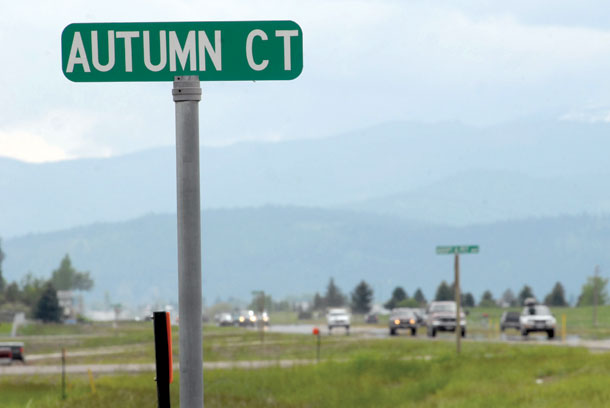The Montana Supreme Court recently affirmed part of a district court judge’s ruling that Flathead County commissioners erred when zoning 63 acres of land north of Kalispell on U.S. Highway 93.
The ruling, handed down on Dec. 13, backed up half of Flathead County District Court Judge David Ortley’s 2013 opinion that the county made a mistake when the commission approved a zone change for 63 acres north of Kalispell, switching the properties from the agricultural and suburban agricultural designations to a newly created B-2HG zone.
Flathead County created the B-2HG zone, commonly referred to as the greenbelt zone, in 2011 to allow business and commercial uses on property served by primary and secondary highways in Flathead County. The zone was subject to mitigation requirements, such as building heights, enhanced signage and lighting standards. It also requires a greenbelt, with prescribed percentages of the property to be dedicated for setbacks.
After the zone was added to the Flathead County Zoning Regulations, several property owners applied for a zone change on their land, which the commission granted in February 2012.
Local nonprofit Citizens for a Better Flathead challenged both the commission’s adoption of the new zone in the county zoning regulations and the map amendment making it official north of Kalispell. The group asserted that the county failed to substantially comply with the Flathead County Growth Policy when making the zone change, and that it constituted illegal spot zoning.
Ortley ruled in CBF’s favor in 2013 saying both the map amendment and the zone designation B-2HG were voided. The county challenged the ruling, taking it to the state Supreme Court.
In its Dec. 13 ruling, the Supreme Court wrote that Ortley was half correct in his judgment when he voided the map and text amendments. Planning staff in both Whitefish and Kalispell opposed the amendment, due to concerns it would “allow strip development to expand beyond the already existing strip development, contrary to the long-range planning for both Kalispell and Whitefish.”
While the zone did use similar standards as the cities to impact strip development, the Supreme Court ruled that “consideration was not given to whether re-zoning this property along the highway would either limit or enhance the kind of development disfavored by the Growth Policy.”
The justices also opined that the county commission did not fully address traffic concerns and considerations when changing the zone to B-2HG, writing that there was no evidence that the county even consulted the state Department of Transportation for guidance on developing land along Highway 93.
Finally, the Supreme Court wrote that Flathead County paid little attention to the compatibility of the zone with urban growth in the vicinity of cities and towns, as outlined in state law.
The land was already designated suburban agricultural, which is consistent with Kalispell’s Growth Policy. Kalispell’s interest in the zoning was heightened because the land is across and north from land the city has already annexed. Ortley wrote, “It is very reasonable to assume that Kalispell will grow in that direction and annex this land.”
The Supreme Court ruled that while the zone may have tried to mimic the same standards and mechanisms Kalispell uses, the county did not follow its Growth Policy when adopting the map amendment because it did not fully contemplate the inconsistencies with “planned and potentially imminent Kalispell growth.”
However, the justices wrote that Kalispell does not have “veto power” over the county’s zoning, but this situation was a “clear conflict” between the zone change and the stated growth purposes in Kalispell’s plan for property immediately adjacent to the city.
Mayre Flowers, executive director of Citizens, said the ruling could help ease conflict between the county and the cities when it comes to planning.
“I am pleased with this important precedent, which will hopefully reduce the conflict between our county and our municipalities over land use decisions that affect both jurisdictions,” Flowers wrote in a statement. “Clearly, as affirmed by the Supreme Court, under our zoning laws both are given a voice in the decision making process.”
The Supreme Court also reversed Ortley’s decision to void the B-2HG zoning designation as a whole, because the county didn’t change anything “on the land” when they added a new designation to the list. The court would have to show there is nowhere in Flathead County this zone could legally exist.
“Put another way, to invalidate an ordinance enacting only a text amendment, a court must conclude there is no place within the jurisdiction where the amendment could be implemented without violating statutory requirements,” the court wrote.
